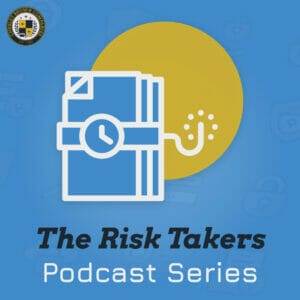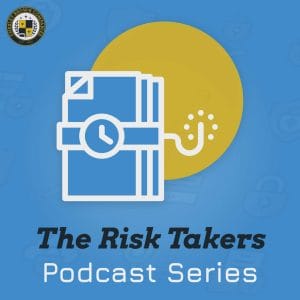Bomb Threats and Suspicious Packages
The recent bombing incidents in and around Austin, Texas serve as an unfortunate reminder that those responsible for all properties and facilities must remain vigilant and be prepared to respond to any bomb threat and/or suspicious package quickly and responsibly. Having a comprehensive risk mitigation plan in place can help save lives, and reduce the impact such a disaster might have on your business continuity. Actions taken during the first minutes of an emergency are critical. Your property needs to have a clearly defined, well-practiced emergency response plan, which includes clearly defined actions for employees and security personnel regarding the recognition of, response to, and reporting policy in the case of a suspicious person, action, or item and any bomb threats received.
When conducting a review of your policies and procedures, you must assess whether these policies and procedures (1) coincide with your organization’s current security goals and posture, (2) meet your facility’s perceived risk levels, and (3) meet best practice standards of the industry and like properties. You should also conduct your review in coordination with your security team, police, and/or local law enforcement officials, which will ensure a unified approach to incident management and facilitate collaborative protection efforts.
Elements of An Emergency Plan
• Life Safety
• Direction & Control
• Communication
• Recovery & Restoration
Every facility should develop and implement a crisis plan for protecting employees, visitors, contractors and anyone else within the property. If you don’t have a current or active response plan, the first action should be to conduct a risk assessment to identify potential vulnerabilities of your property. Developing an emergency plan begins with an understanding of what can happen so when an crisis occurs, you and your team are well prepared and can minimize potential damage.
10 Steps for Developing the Emergency Response Plan
- Establish standards, goals and/or objectives for your emergency response plan.
- Conduct a risk assessment to identify hazard and possible threat scenarios.
- Identify the availability and capabilities of resources for incident stabilization, including security staff, engineering team members, systems, and equipment available within your facility and from external sources.
- Engage public emergency services (e.g. fire, police and emergency medical services) to determine their response time to your facility, knowledge of your facility and its hazards, and their capabilities to stabilize an emergency at your facility.
- Determine if there are any city or state regulations pertaining to emergency planning.
- Identify your facility’s abilities and any restrictions regarding evacuation, shelter, shelter-in-place, or lockdown during an event.
- Develop clear, concise emergency procedures to address all identified threats.
- Coordinate emergency planning with public emergency services to stabilize incidents involving the hazards at your facility.
- Train personnel so they will be able to fulfill their roles and responsibilities.
- Practice your plan.
You may also feel free to contact us; we are more than happy to assist you in reviewing your facility’s emergency response plan, assist with developing a plan, or conduct response assessment to evaluate the effectiveness of your current plan during a test scenario or red-teaming exercise.
How Can We Help?
Contact us today to discuss how Chesley Brown can help navigate your organization navigate around ever-evolving threats, and mitigate your risk.
Posted by:
Sign up!
For industry-leading guides and analysis sign up for our blog below.
Latest News
risk-takers #05 Corporate Counterespionage
Its not always the stuff of cold war spy novels but corporate or economic espionage continues to affect businesses all over the world both large and small at an exponential rate. It seems like there’s a new breach every time you turn on the news. The difference is the biggest companies have the resources and budget the protect themselves. But where does that leave SMBs? In this week’s episode, Brent and Dell Spry sit down to discuss the growing threat of corporate espionage, how businesses are exposing their intellectual property. They’ll also cover simple steps small businesses can take to stop those efforts in their tracks. Tune in to this fascinating discussion.
Read MorePodcast | Risk Takers Series #05 Corporate Counterespionage
Its not always the stuff of cold war spy novels but corporate or economic espionage continues to affect businesses all over the world both large and small at an exponential rate. It seems like there’s…
Read MorePodcast | Risk Takers Series #04 Brad Orsini – Community-based Security
Visiting our places of worship shouldn’t be dangerous. Unfortunately, faith-based organizations are facing the difficult challenge of how to protect their congregations from religion-motivated violence, and still maintain the welcoming, open environment community members expect.…
Read Morerisk-takers #04 Brad Orsini – Community-based Security
Visiting our places of worship shouldn’t be dangerous. Unfortunately, faith-based organizations are facing the difficult challenge of how to protect their congregations from religion-motivated violence, and still maintain the welcoming, open environment community members expect.
In this week’s episode Brent calls up Bradley Orsini, the Senior National Security Advisor of the Secure Community Network, the official safety and security organization of the Jewish community in North America to discuss these issues, lessons learned from the mass shooting at the Tree of Life Synagogue, and the most effective strategies faith-based organizations can use to protect their congregations.
Read Morerisk-takers #3 Surveillance Detection Routes (SDR)
Have you ever had a gut feeling you were being followed? You might not be so crazy after all. It’s a frightening thought. You’ve spent years building your business, but all it takes is one bad day to compromise that dream. In this week’s episode Brent sits down with FBI Special Agent (Ret.) Dell Spry to discuss surveillance detection routes, what they are, and how they can be used as a spy detector device to find out if you are under surveillance.
Read More




